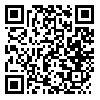1. Ntoumanis, N,(2005), A Prospective Study of Participation in Optional School Physical Education Using a Self-Determination Theory Framework. Journal of Educational Psychology, 97 (3): 444-453.
2. Sallis, J.F, (2000), Age-related decline in physical activity: A synthesis of human and animal studies. Medicine and Science in Sports and Exercise, 32, 1598-1600.
3. Roberts, G.C., Treasure, D.C., Conroy, D.E, (2007), Understanding the Dynamics of Motivation in Physical Activity: The Influence of Achievement Goals on Motivational Processes .In G. Tenenbaum and R. C. Eklund (Eds.), Handbook of sport psychology, (3nd ed., pp. 3-30). John Wiley & Sons, Inc., Hoboken, New Jersey.
4. Vallerand, R.J,(2007), Intrinsic and Extrinsic Motivation in Sport and Physical Activity: A Review and a Look at the Future.In G. Tenenbaum and R. C. Eklund (Ed.), Handbook of sport psychology, (3nd ed., pp. 59-83). John Wiley & Sons, Inc., Hoboken, New Jersey.
5. Deci, E. L., & Ryan, R. M, (2000), The “what” and “why” of goal pursuits: Human needs and the self-determination of behavior. Psychological Inquiry, 11, 227–268.
6. Bieg, S., Backes, S,. & Mittag, W,(2011), The role of intrinsic motivation for teaching, teachers’ care and autonomy support in students’ self-determined motivation. Journal for Educational Research Online, 3(1):122–140.
7. Vallerand, R.J, (1997), Toward a hierarchical model of intrinsic and extrinsic motivation, In M. Zanna (Ed.), Advances in experimental social psychology, pp. 271-360. New York: Academic Press.
8. Ntoumanis, N, (2001), A self-determination approach to the understanding of motivation in physical education. British Journal of Educational Psychology, 71, 225-242.
9. Vallerand, R.J, & Bissonnette, R, (1992), Intrinsic, extrinsic, and amotivational styles as predictors of behavior: A prospective study. Journal of Personality, 60, 599-620.
10. Bartholomew, K. J,(2011), The role of interpersonal control and need thwarting in the prediction of ill-being in sport:A self-determination theory approach, doctoral thesis, The University of Birmingham, pp: 2-27-28.
11. Amorose, A. J., & Butcher, D,(2007), Autonomy-supportive coaching and self-determined motivation in high school and college athletes: A test of self-determination theory. Psychology of Sport and Exercise,8(5): 654–670
12. Amorose, A. J., & Horn, T. S, (2000), Intrinsic motivation: Relationships with collegiate athletes’ gender, scholarship status, and perceptions of their coaches behavior. Journal of Sport Exercise Psychology, 22, 63–84.
13. Hassandra, M., Goudas, M., & Chroni, S,(2003), Examining factors associated with intrinsic motivation in physical education: a qualitative approach. Psychology of Sport and Exercise, 4, 211–223.
14. Biddle, S., & Wang, J.,(2003), Motivation and self-perception profiles and links with physical activity in adolescent girls, Journal of Adolescence 26 ,687–701.
15. Murcia, J. A., Rojas N.P., & Coll, D.G,(2008), Influence of autonomy support, social goals and relatedness on amotivation in physical education classes. Psicothema, 20, 636-641.
16. Lim,C., & Wang, J.,(2009), Perceived autonomy support, behavioural regulations in physical education and physical activity intention, Psychology of Sport and Exercise, 10 , 52–60.
17. Shen,B., Li,W., Sun ,H., & Rukavina, P. B,(2010), The Influence of Inadequate Teacher-to- Student Social Support on Amotivation of Physical Education Students. Journal of Teaching in Physical Education, 29, 417-432.
18. Ahmadi, M., Namazizadeh, M., & Mokhtari, P,(2012),Perceived Motivational Climate, Basic Psychological Needs and Self Determined Motivation in Youth Male Athletes. World Applied Sciences Journal, 16 (9), 1189-1195.
19. Spittle, M., Jackson, K., & Casey, M,(2009), Applying self-determination theory to understand the motivation for becoming a physical education teacher.Teaching and Teacher Education, 25 , 190–197.
20. Ntoumanis, N., Pensgaard, A.M., Martin, C., & Pipe, K, (2004), An ideographic analysis of amotivation in compulsory school physical education. Journal of Sport & Exercise Psychology, 26, 197-214.
21. Cavill, N., Biddle, S.J.H., & Sallis, J.F, (2001), Health enhancing physical activity for young people: Statement of the United Kingdom Expert Consensus Conference. Pediatric Exercise Science, 13, 12-25.
22. Pelletier, L. G., Beaudry, S., Sharp, E. & Otis, N,(2008),The Interpersonal Behaviors Scale: A measure of Autonomy Support, Competence and Relatedness in Different Life Domains. Unpublished manuscript, University of Ottawa, Ontario, Canada.
23. Reeve, J, (2002), Self-determination theory applied to educational settings. In E.L. Deci & R.M. Ryan (Eds.), Handbook of self-determination research (pp. 183–203). Rochester, NY: University of Rochester Press.
24. Royer, N., Provost, M.A., Tarabulsy, G., & Coutu, S,(2008), Kindergarten Children’s Relatedness to Teachers and Peers as a Factor in Classroom Engagement and Early Learning Behaviors. Journal of Applied Research on Learning, 2(1), Article 5.
25. Zhang, T., Solmon, M. A., Kosma, M., Carson,R. L., & Gu, X,(2011), Need Support, Need Satisfaction, Intrinsic Motivation, and Physical Activity Participation among Middle School Students. Journal of Teaching in Physical Education, 30, 51-68.
26. Hsu, Y.W., Chou, C. P., Rodriguez ,S. T., Belcher ,B. R., & Metz ,D. S,(2011), Influences of Social Support, Perceived Barriers, and Negative Meanings of Physical Activity on Physical Activity in Middle School Students. Journal of Physical Activity and Health, 8, 210 -219.
27. Can, S,(2010), Determination of the factors motivating and motivation level of the weightlifters participating in Turkish weightlifting championship. Procedia Social and Behavioral Sciences, 2, 4245–4249.






